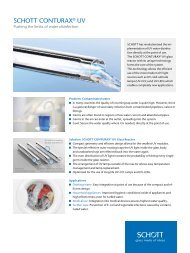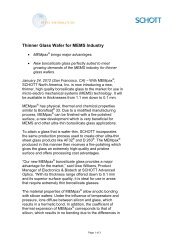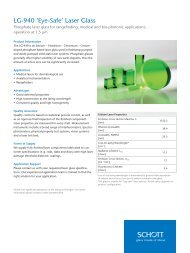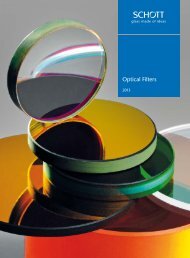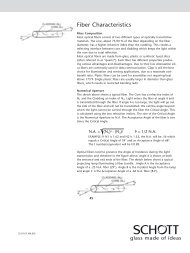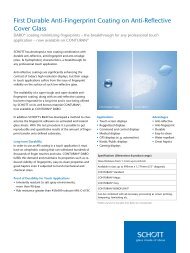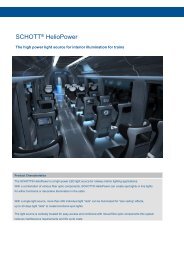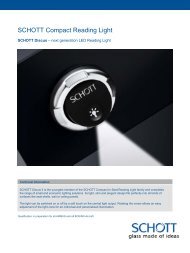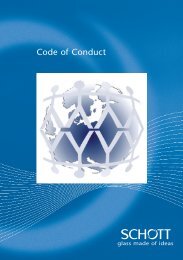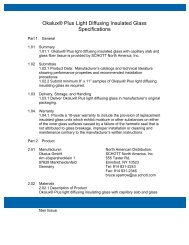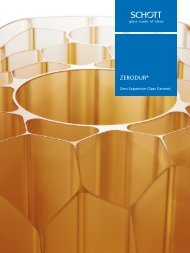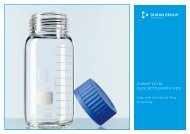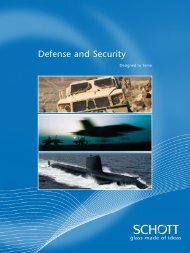Machine Vision Illumination Catalog, Vol 001
Machine Vision Illumination Catalog, Vol 001
Machine Vision Illumination Catalog, Vol 001
You also want an ePaper? Increase the reach of your titles
YUMPU automatically turns print PDFs into web optimized ePapers that Google loves.
Fiber Optic Light Sources<br />
and Light Guides<br />
MHAA MHAB Series<br />
Light Guide Data<br />
Mechanical Characteristics and Environment Resistance<br />
Mechanical Characteristics<br />
• Minimum Bend Radius<br />
The minimum bend radius of fiber optic light guides is determined mainly by the tube's bend radius. It is also influenced by<br />
the diameter and length of the fiber optic bundle. If you bend a light guide over its limit, it cannot perform properly because<br />
transmitted light quantity decreases due to bending or disconnection of optical fiber. Note that bend radius is larger for<br />
optical fiber with a random sequence.<br />
Light Guide Data<br />
• Durability for Repeated Bending<br />
Although durability of optical fiber for repeated bending varies depending on types, it is not very good overall. Optical fiber<br />
breaks or deteriorates because of twisting, friction with other optical fiber, and friction within tubing (coating for a fiber optic<br />
bundle). When this happens, transmitted light quantity reduces and a light guide cannot perform sufficiently. Durability for<br />
repeated bending is even lower for optical fiber with a random sequence. If more durability is required, use a flexible light<br />
guide (special order) with a different internal structure and special coating agent.<br />
Environment Resistance<br />
• Heat Resistance<br />
The normal heat resistance ranges for raw plastic fiber, multi-component glass fiber, and quartz fiber are 70, 430˚C (except<br />
oiling), and 1,000˚C (except coating) respectively. Upper limit temperature for light guides ends differs according to the heat<br />
resistance of adhesives and coating materials used to protect optical fiber. Upper limit temperature for raw plastic fiber,<br />
multi-component glass fiber, and quartz fiber are 70˚C, 200˚C, and 200˚C respectively.<br />
If higher heat resistance is required, please use heat-resistant line guides (special order, 300˚C for multi-component glass fiber<br />
and quartz fiber). If even higher heat resistance is required, quartz fiber light guides that are resistant to 500˚C can be<br />
manufactured.<br />
Life of raw optical fiber varies according to temperature that it is used at, and the amount and time of change in temperature.<br />
Please contact us before using light guides in special conditions.<br />
Heat Resistance<br />
Optical Fiber<br />
Heat Resistance of Raw<br />
Fiber (˚C)<br />
End Heat Resistances of<br />
Standard Products (˚C)<br />
End Heat Resistance of<br />
Heat-Resistant Products (˚C)<br />
Plastic 70 70 -<br />
Multi-Component Glass 430 (Except Oiling) 200 300<br />
Quartz<br />
1,000 or More (Except<br />
Coating)<br />
200 300, 500<br />
i-122



